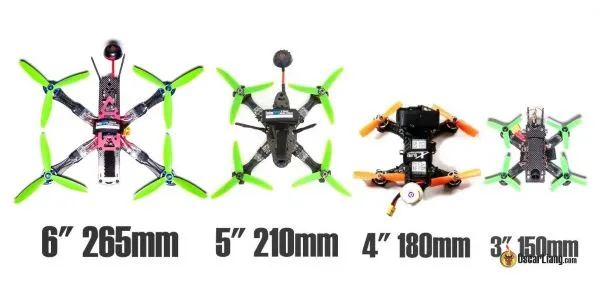Introduction
What is it, and how is it used?
Drones, or quadcopters, are multirotor flying devices. Depending on the number of motor-propeller groups (MPGs), a Greek prefix is added: two motors - bicopters, three - tricopters, four - quadcopters, six - hexacopters, eight - octocopters, and there are various other configurations for specific tasks.
The most popular design is the quadcopter (four propellers), which is optimal in terms of complexity and efficiency. Aerial vehicles are more complex than their ground-based counterparts due to the need to balance all forces acting on them. Most drones have an even number of propellers, where half spin clockwise and the other half counterclockwise. For easier understanding, think of a helicopter: it has a tail rotor that prevents the aircraft from uncontrollably spinning. Adding more motors than four is done to increase the load-carrying capacity and improve redundancy (theoretically, 6- or 8-propeller drones can keep flying even if some motors fail, though this has practical limitations).
Common abbreviations for quadcopters include drone, quad, and copter.
Even within the same number of propellers, drones vary in size. Instead of referring to exact dimensions in centimeters, people typically refer to the propeller diameter (in inches), as the propeller size, number of blades, and their pitch define the thrust produced by the drone.

However, "bigger" doesn’t necessarily mean "better." The more propellers and motors, the larger the frame and batteries required, increasing the drone's weight. It's the thrust-to-weight ratio that determines how agile a drone will be. But reducing weight requires a careful approach. If weight is only reduced from the frame (and not the whole drone), it can weaken its structural integrity. And no one wants their drone sitting on a shelf, waiting for repairs or spare parts. When reducing weight, it needs to be done across the entire drone.
This leads to two key rules:
- The lighter (and smaller) the drone, the harder it is to break (but everything can break).
- The thrust-to-weight ratio determines the drone’s speed capabilities.
What is the minimum set needed to fly an FPV drone?
Examples of starter kits for various budgets.
How much does it cost?
It's strongly recommended that beginners avoid buying used parts or drones without additional help during their first flights. At first, it can be hard to tell the difference between your lack of experience and component malfunction.
The hobby costs as much as any sport at a somewhat serious or professional level. You can start small by purchasing a radio transmitter and a simulator to see if it’s something you enjoy. It's generally not recommended to try flying a real drone without adequate simulator practice. The average cost of a transmitter is about $120, and simulators are around $15. Entry-level indoor drones can cost from $300 (yes, there are drones that fit in the palm of your hand; no, repairing them won’t break the bank). A full setup for outdoor flying with analog video transmission starts at $500, while a setup with digital video starts at $1,000.
It's not necessary to spend a fortune immediately, but over time, you’ll understand what spares you need, what you should upgrade, and you’ll be more comfortable with the costs.
Is this for me?
Good question! We recommend learning about the different styles of flying (see flight styles), evaluating your budget, free time, and potential (for example, in Russia, top young drone racers can rise to the top in six months, while older pilots may take three years or more; similarly in filming, the market is becoming crowded with "specialists"). Most importantly, start with a simulator to see if you enjoy it before making any major investments.
You can buy used equipment, and if the hobby doesn’t take off, you can sell it with little financial loss, but you’ll gain valuable experience.
However, don't rely on a single source of information. The technology evolves rapidly, and modern gear is far more efficient than older equipment, which may feel like "junk" by comparison. It's crucial to stay informed by reading and asking for advice in forums and communities.
Remember, drone pilots are usually very friendly and open to helping newcomers enjoy the skies.